07 Apr Types of Terrazzo Systems
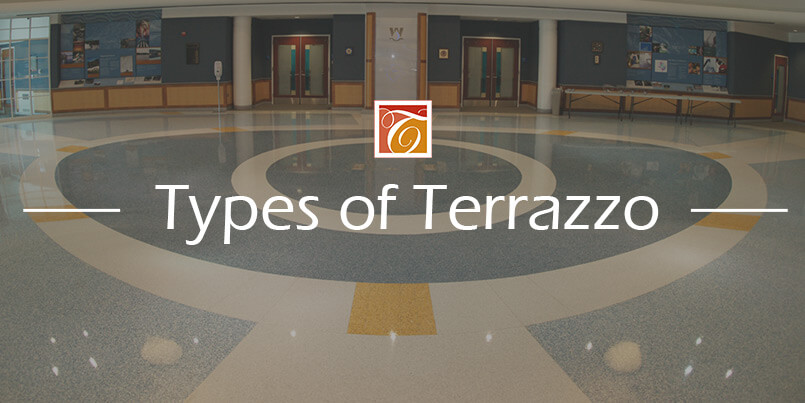
The Types of Terrazzo Systems
Terrazzo looks amazing when finished. A lot of preparation goes into the craft. Installers mix components, trowel the floor and finish it off by grinding and polishing the surface. But did you know there are many terrazzo systems set in place? About 90% of projects in the future will use epoxy terrazzo but there are other systems architects can consider. Let’s take a look at the many types of terrazzo.
Epoxy Terrazzo System
Probably the most common terrazzo system available, epoxy terrazzo is ideal for any type of residential or commercial building. It literally is the best thin-set system. Thickness ranges from 1/4″ inch to 3/8″, making it one of the thinnest floor materials around. Due to its thinness, it is also light in weight. The weight of this system is 3 to 4 pounds. Don’t be fooled by its lightness. It is one durable floor.
In addition to its high tensile and compressive strengths, epoxy terrazzo allows any designer to choose any color, shape, or pattern for a project. There are no restrictions.
Besides its durability and design possibilities, epoxy terrazzo has many advantages such as chemical resistance and slip resistance. It has a unique strength that you cannot find in any cement-based system. One of its best features is its ease of maintenance. All you need is a mop and a bucket of warm water. Epoxy terrazzo has the lowest maintenance cost of all the terrazzo systems.
Installers can combine the terrazzo system with a flexible membrane, which allows the floors to absorb some horizontal crack or control joint movement. No worries about installation time neither. It has the quickest pour to grind the installation time of all the types of terrazzo systems. Installers can pour a 5:1 ratio mix over concrete or wooden spaces for a highly decorative floor design. Although epoxy terrazzo has great versatility, we do not recommend epoxy terrazzo for exterior use. Other than that, epoxy terrazzo is a great option for its durability, design capabilities, and cost-effective pricing.
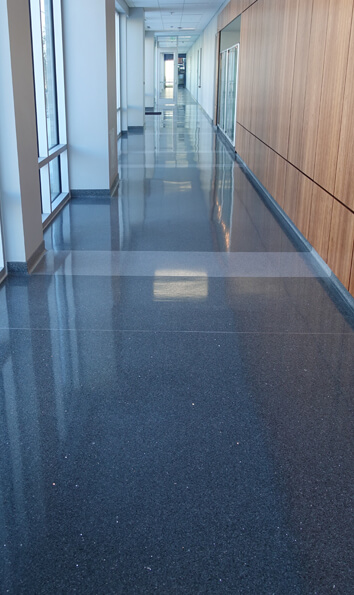
Sand Cushion Terrazzo System
Next up on TERRAZZCO’s list is sand cushion terrazzo. To really understand sand cushion terrazzo, we must understand the structure of the system. This type of terrazzo composes of different layers of material. It has a cement matrix topping underbed with wire reinforcements, an isolation sheet, and an additional layer of sand. The total thickness of sand cushion terrazzo is 3 inches, which includes half an inch of terrazzo topping. Overall the terrazzo weighs between 25 to 30 pounds. Like most types of terrazzo, sand cushion terrazzo has great design capabilities. Architects and designers can find a wide array of patterns and colors to use in their design plans. This system absorbs any minor defects that may occur. It also prevents mirroring on the surface. It’s a cost-effective option most professionals consider as the best available cement terrazzo system.
Bonded Terrazzo System
Terrazzo can also bond with concrete. This system is called bonded terrazzo. The great thing about bonded terrazzo is its interior or exterior application. Specifications for this material include a thickness that ranges from 1.75 inches to 2.25 inches, with a 0.5-inch terrazzo topping and a weight between 18 to 22 pounds. Thickness and weight are two very important factors to consider in deciding to install a bonded terrazzo floor. We recommend consulting with a professional installation company to make sure the floor is properly constructed. Bonded terrazzo has its advantages but there are a few disadvantages as well. For example, panel sizes can limit design creations. Unlike epoxy terrazzo, bonded terrazzo has a few limitations in color options as well. When terrazzo bonds to cement, expect a longer cure time.
Monolithic Terrazzo System
Known for its fast installation time and its pricing, monolithic terrazzo is a great option for architects and designers who follow a budget but want a durable and beautifully designed terrazzo floor. The system is great for retail stores, schools, and malls. Monolithic terrazzo relies on concrete quality for flatness and crack prevention. Specifications include a thickness of half an inch and weighs between 5 to 7 pounds.
Polyacrylate Terrazzo System
Another great terrazzo system that is known for its fast installation process and its moderate pricing is polyacrylate terrazzo. The main attribute associated with polyacrylate terrazzo is its ability to reduce moisture vapor transmissions. An acrylic additive is used so that cement can be poured thickly or thinly. Specifications for this type of terrazzo system are a 3/8 inch thickness and weight of 4.5 pounds. Although it is a great material, it has a few limitations which include its thickness and chip sizes. Small chips are required. Also, the system has a high flatness tolerance.
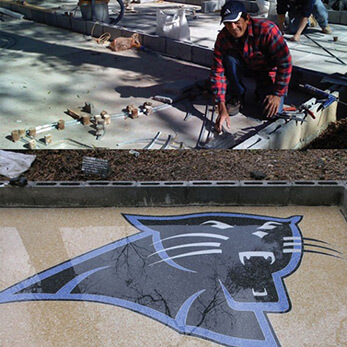
Rustic Terrazzo System
And lastly, there is rustic terrazzo. Most terrazzo floor installations occur indoors. However, with rustic terrazzo, the installation takes place outdoors. Terrazzo’s exterior use gives it an advantage over other flooring options. You may wonder whether an outdoor terrazzo system can be smooth and slippery. Not with rustic terrazzo. Rustic terrazzo has a rough, textured surface that makes it slip-resistant and adaptable to any weather conditions. The total thickness of a rustic terrazzo floor ranges from half an inch to six inches.
When installing this type of terrazzo floor, it has the same elegant design elements that other terrazzo floors possess. Designers can use a variety of textures, colors, and patterns to create any design they wish. So where exactly can rustic terrazzo be installed? The answer is anywhere outside. The material could make for an interesting pool or other outside surroundings of apartments, restaurants, garages, hotels, and other commercial establishments.
There are many types of terrazzo systems, each with its own beneficial features. From epoxy terrazzo to rustic terrazzo, terrazzo adds great value for contractors and architects in their upcoming commercial projects.
Source: NTMA.com
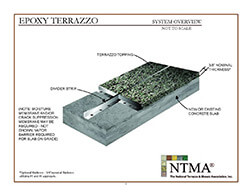
Download NTMA Reference Guide
NTMA provides a great reference to all terrazzo systems. Download the guide to learn more.
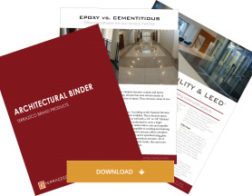
Get More Details About Terrazzo
Download the TERRAZZCO Architectural Binder, a guide overviewing the terrazzo industry. Learn why terrazzo is trending among flooring materials.






